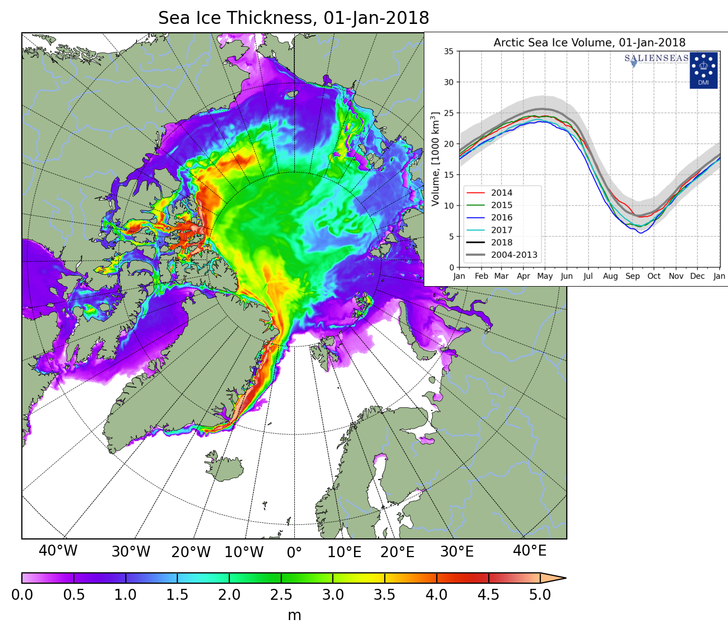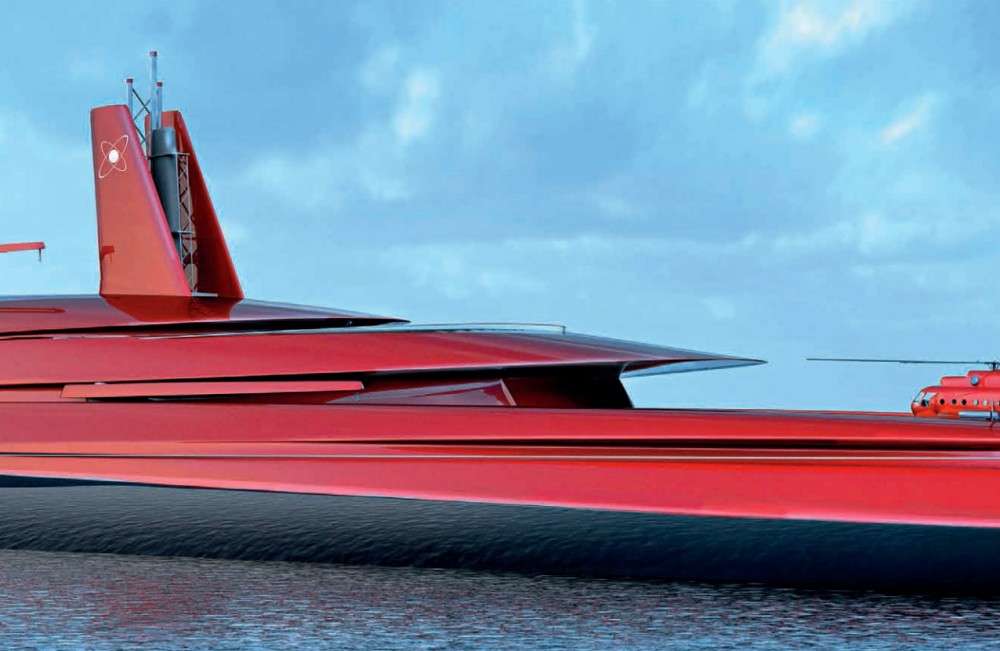Despite the decline of northern sea ice from the 1979 official start date for measuring the frozen stuff there is still a heck of a lot of it.
Here's the Danish Meteorological Institute's reckoning of thickness:

You'll note that there are spots along Russia's Northern Sea Route (along the right side of the map) that are clocking in at 3-4 metres earlier this week, 10 to 13 feet thick.
For reference, the Russian ships currently being built, the largest icebreakers in the world at the moment, are designed to break 3 metre (10 foot) thick ice, while these in the planning stage are supposed to be good for up to 5 metre (16.4 foot) thick ice but honestly I would not want to be on the boat as it tried to break through that stuff.
In comparison. we happened to mention the USCG Healy in a post last month. The Healy is the largest U.S. Coast Guard icebreaker and the only U.S. surface ship to get to the North Pole and it sounds feeble stacked up against the Russian monsters:
"...Healy is designed to break 4.5 ft (1.4 m) of ice continuously at 3 knots (5.6 km/h; 3.5 mph) or ice 10 ft (3.0 m) thick when backing and ramming..."And again, you really don't want to be aboard when it's doing the ramming and backing-off and ramming and backing-off and...
From Bellona, January 3:
An artists rendition of the Lider Icebreaker.
(Photo: Rosatom/Unified Shipbuilding Corporation)
Dmitry Rogozin, Russia’s colorful deputy prime minister, has again made headlines by claiming the country will build a series of advanced nuclear icebreakers that have long been considered a mere fantasy.
Speaking to Tass, the official state newswire, before the end of the year, Rogozin said that Russia would build three Lider class nuclear icebreakers between 2023 and 2025, which would make navigation for commercial traffic in the Arctic possible all year long.
These new icebreakers, dubbed project 10510, would follow on three other nuclear ice-traversing vessels that Russia is already building to the tune of nearly $2 billion a piece: The Arktika, the Sibir and the Ural, the hulls for two of which have already been floated at the Baltic Shipyard in St Petersburg – and which were until recently billed as the biggest icebreakers ever.

An artist's rendition of the Lider and its helipad. (Source: oaoosk.ru)
But the Lider will be even bigger. Mention of the Goliath vessel — whose name is a riff on the English word leader — first appeared in 2015, when the United Shipbuilding Corporation featured its space age design on its cover, piquing awed speculation among Russian nuclear industry watchers.
The magazine featured a mock-up of the streamlined vessel, from the point of view of a landing helicopter, steaming through islands of fluffy ice like an oligarch’s prized yacht. An article inside sketched out its massive dimensions, giving it a deadweight of 55,000 tons, and a length that was 50 meters longer even than the icebreakers Russia is building now.
The Lider would also be able to ride its as-yet-to-be-developed RITM-400 reactors through five meters of ice, and cut a swathe for following ships measuring 50 meters wide. Certain specifications in its hull design would also make it far more agile in the water than its older cousins.
Rogozin, who takes a swashbuckling view of Arctic development, immediately seized on the Lider project, becoming its most ardent booster at a time when Russia’s dour economy can barely afford to keep its old icebreakers afloat. For Rogozin, a man who once advanced Moscow’s claim on the Arctic by turning up in Norway’s Svalbard Archipelago without a visa and waving a Russian flag, the Lider’s fanciful dimensions seemed a good fit....MUCH MORE
